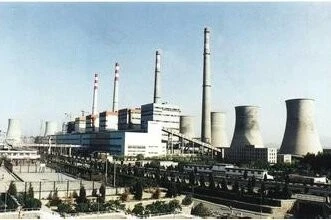Optimizing Plate Heat Exchanger Transfer Efficiency (Part One)

In recent years, plate heat exchangers have evolved into a mature technology with high heat transfer efficiency, compact design, lightweight construction, low temperature resistance coefficients, and convenient disassembly. This versatile heat exchanger type finds extensive use in the heating industry, offering various assembly methods such as detachable, welded, brazed, and plate-and-shell configurations.
Detachable plate heat exchangers, known for easy disassembly, cleaning, and flexible area utilization, stand out in heat supply engineering. However, their application is limited by the heat resistance temperature of the rubber gasket, making them suitable primarily for water-water heat transfer.
Efficiency improvement in plate heat exchangers is a comprehensive economic challenge requiring technical and economic considerations. The focus should be on simultaneously enhancing heat transfer efficiency, reducing resistance, and selecting appropriate plate and rubber gasket materials, as well as installation methods to ensure safe operation and prolong equipment service life.
Key Factors for Efficiency Improvement
Improving the efficiency of a plate heat exchanger involves optimizing various factors to enhance its heat transfer performance. Here are key factors that contribute to the efficiency improvement of a plate heat exchanger:
1. Enhance Surface Heat Transfer Coefficient
Utilizing the corrugation of plate heat exchangers induces turbulence even at low flow rates, resulting in a heightened surface heat transfer coefficient. Herringbone-shaped plates with triangular corrugations, especially those with larger angles, exhibit superior flow velocity and coefficients.
2. Mitigate Thermal Resistance of Fouling Layer
The prevention of scaling is paramount in reducing thermal resistance caused by fouling. Even a 1mm thickness of scale can lead to a notable 10% reduction in the heat transfer coefficient. Vigilant monitoring of water quality on both sides of the exchanger is essential to avoid impurities adhering to the plates.
3. Select Plates with High Thermal Conductivity
Plate materials, including austenitic stainless steel, titanium alloy, and copper alloy, play a crucial role in impacting thermal conductivity. While stainless steel is a common choice due to its favorable conductivity and cost-effectiveness, it requires careful consideration to prevent corrosion by chloride ions.
4. Optimize Plate Thickness
The thickness of the plate is unrelated to corrosion resistance but significantly affects pressure-bearing capacity. A thinner plate contributes to an enhanced heat transfer coefficient, with a reduction of 0.1mm resulting in a considerable increase in the total heat transfer coefficient.
5. Increase Logarithmic Mean Temperature Difference
Different flow patterns, such as counterflow, parallel flow, and cross flow, influence the logarithmic mean temperature difference. Counterflow configurations generally yield a more substantial difference. Choosing counter flow or cross flow close to counter flow and adjusting fluid temperatures further enhances efficiency.
Utilizing the corrugation of plate heat exchangers induces turbulence even at low flow rates, resulting in a heightened surface heat transfer coefficient. Herringbone-shaped plates with triangular corrugations, especially those with larger angles, exhibit superior flow velocity and coefficients.
2. Mitigate Thermal Resistance of Fouling Layer
The prevention of scaling is paramount in reducing thermal resistance caused by fouling. Even a 1mm thickness of scale can lead to a notable 10% reduction in the heat transfer coefficient. Vigilant monitoring of water quality on both sides of the exchanger is essential to avoid impurities adhering to the plates.
3. Select Plates with High Thermal Conductivity
Plate materials, including austenitic stainless steel, titanium alloy, and copper alloy, play a crucial role in impacting thermal conductivity. While stainless steel is a common choice due to its favorable conductivity and cost-effectiveness, it requires careful consideration to prevent corrosion by chloride ions.
4. Optimize Plate Thickness
The thickness of the plate is unrelated to corrosion resistance but significantly affects pressure-bearing capacity. A thinner plate contributes to an enhanced heat transfer coefficient, with a reduction of 0.1mm resulting in a considerable increase in the total heat transfer coefficient.
5. Increase Logarithmic Mean Temperature Difference
Different flow patterns, such as counterflow, parallel flow, and cross flow, influence the logarithmic mean temperature difference. Counterflow configurations generally yield a more substantial difference. Choosing counter flow or cross flow close to counter flow and adjusting fluid temperatures further enhances efficiency.

